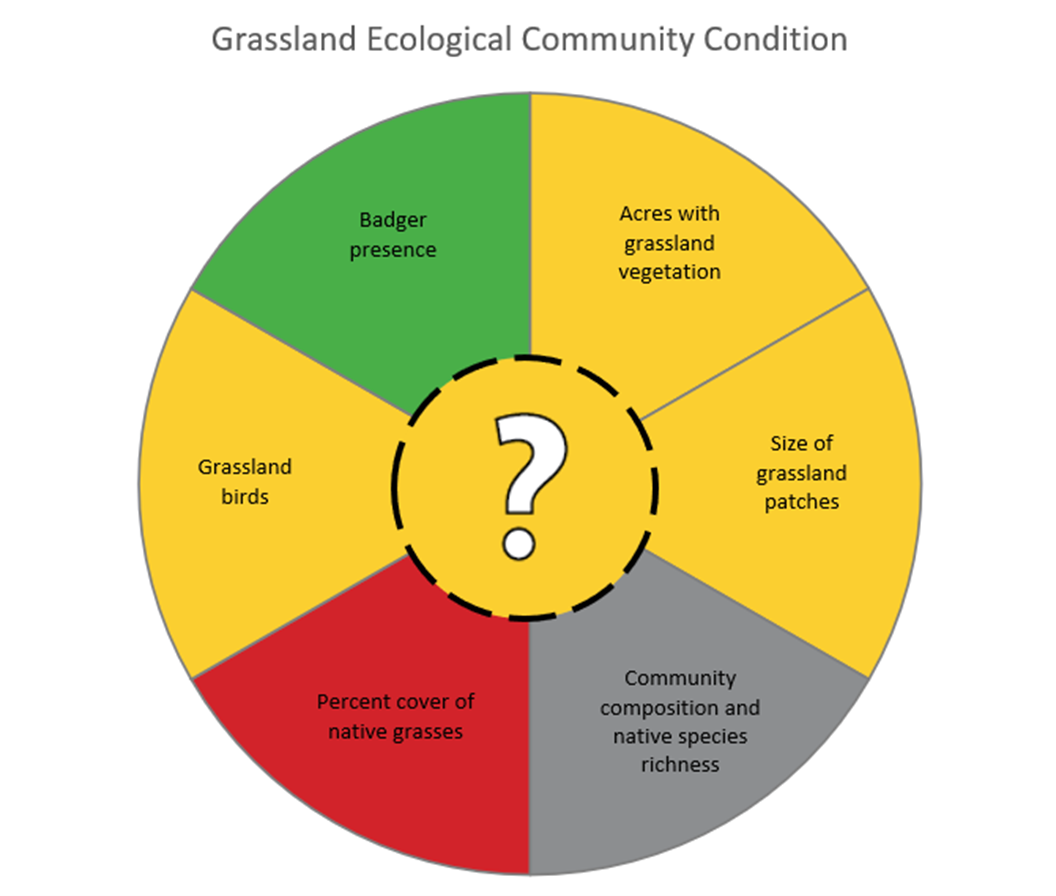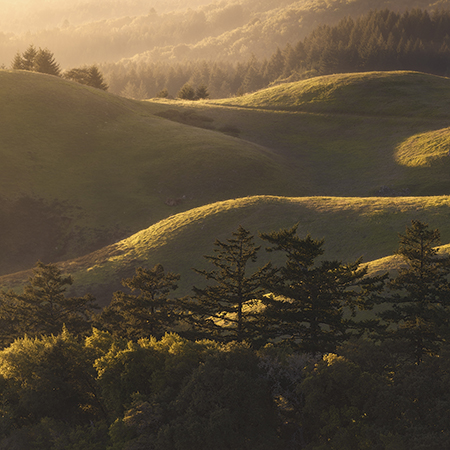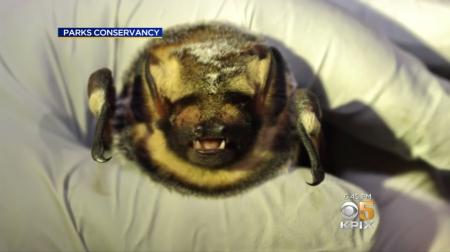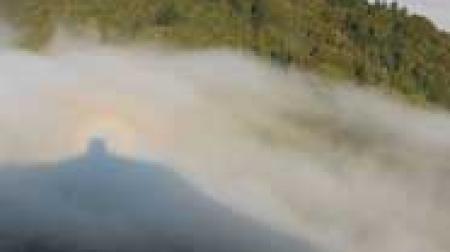Summary
Grassland communities on Mt. Tam are in a condition of Caution as of 2022. Douglas-fir (Pseudotsuga menziesii) and coyote brush (Baccharis pilularis) recruitment into the edges and interiors of some patches means that the overall patch size and number of large patches are below the desired condition. The presence and relative dominance of non-native, invasive grasses and forbs is further causing grassland habitat quality to suffer.
Animals
Since the first assessment in 2016, American badger has been documented within the One Tam area of focus. Grassland bird monitoring also started after a data gap was identified in 2016, which changed their condition from unknown to caution.
Climate Change
In the future, Thorne et al. (2016) concluded that grasslands had mid-to-high climate vulnerability, with much of the north coast becoming unsuitable for grasslands in a warmer and wetter future. Thus, grasslands will be expected to shift across the landscape and change in composition and quality. Near the coast, some grasslands may be lost to coyote brush, while away from the coast, they could expand at the expense of forests and woodlands (Cornwell et al., 2012; Ackerly et al., 2015). In the absence of periodic wildfires, these habitats are also vulnerable to succession.
resources
Ackerly, D. D., Cornwell, W. K, Weiss, S. B., Flint, L. E., & Flint, A. L. (2015). A geographic mosaic of climate change impacts on terrestrial vegetation: Which areas are most at risk? PLoS ONE, 10(6), e0130629. http://dx.doi.org/10.1371/journal.pone.0130629
Cornwell, W. K., Stuart, S., Ramirez, A., Dolanc, C. R., Thorne, J. H., & Ackerly, D. D. (2012). Climate change impacts on California vegetation: Physiology, life history, and ecosystem change (White Paper from California Energy Commission’s California Climate Change Center). Publication number: CEC-500-2012-023. Berkeley, CA: University of California, Berkeley. Available from: http://www.energy.ca.gov/2012publications/CEC-500-2012-023/CEC-500-2012-023.pdf.
Thorne, J. H., Boynton, R. M., Holguin, A. J., Stewart, J. A. E., & Bjorkman, J. (2016). A climate change vulnerability assessment of California’s terrestrial vegetation. California Department of Fish and Wildlife. https://nrm.dfg.ca.gov/FileHandler.ashx?DocumentID=116208&inline




